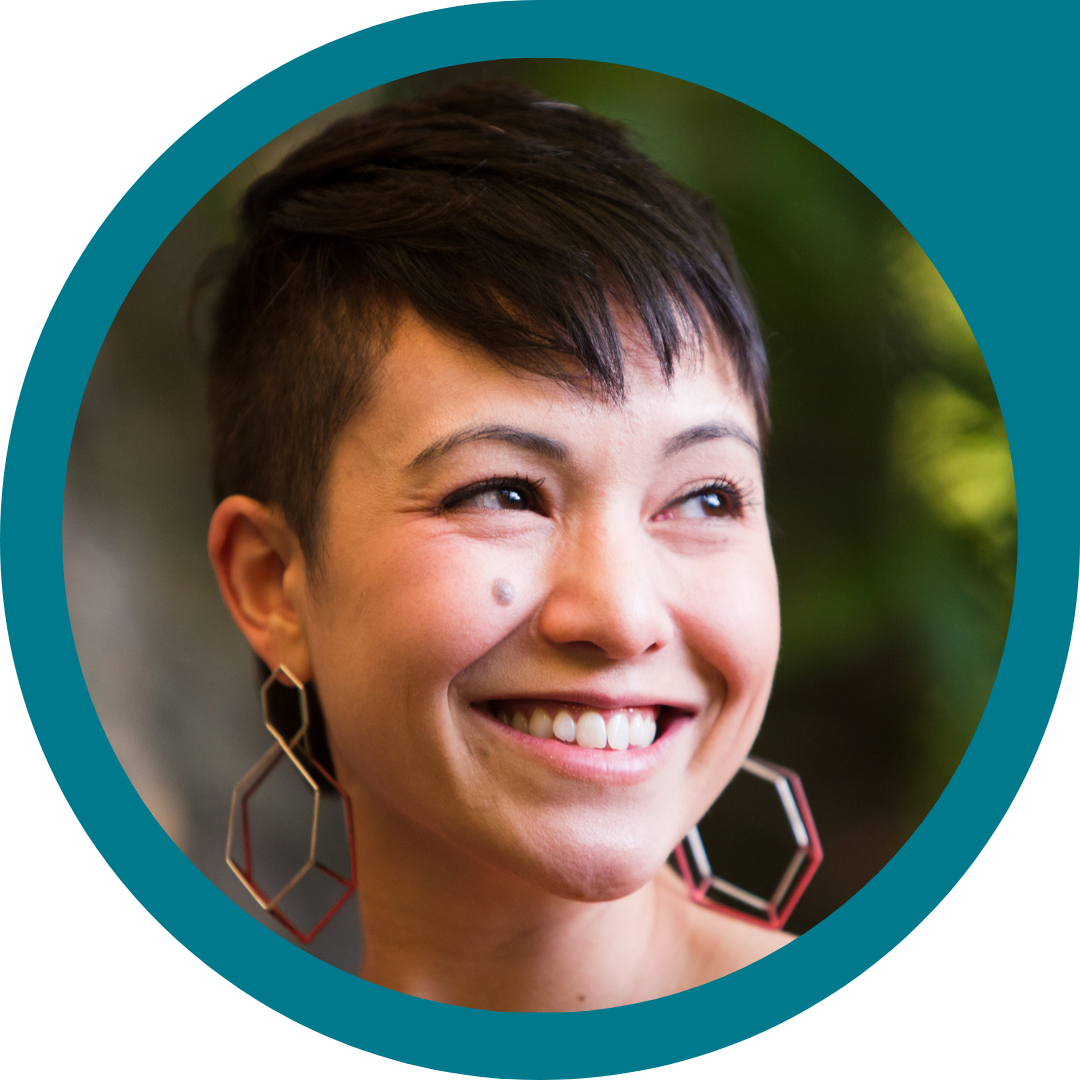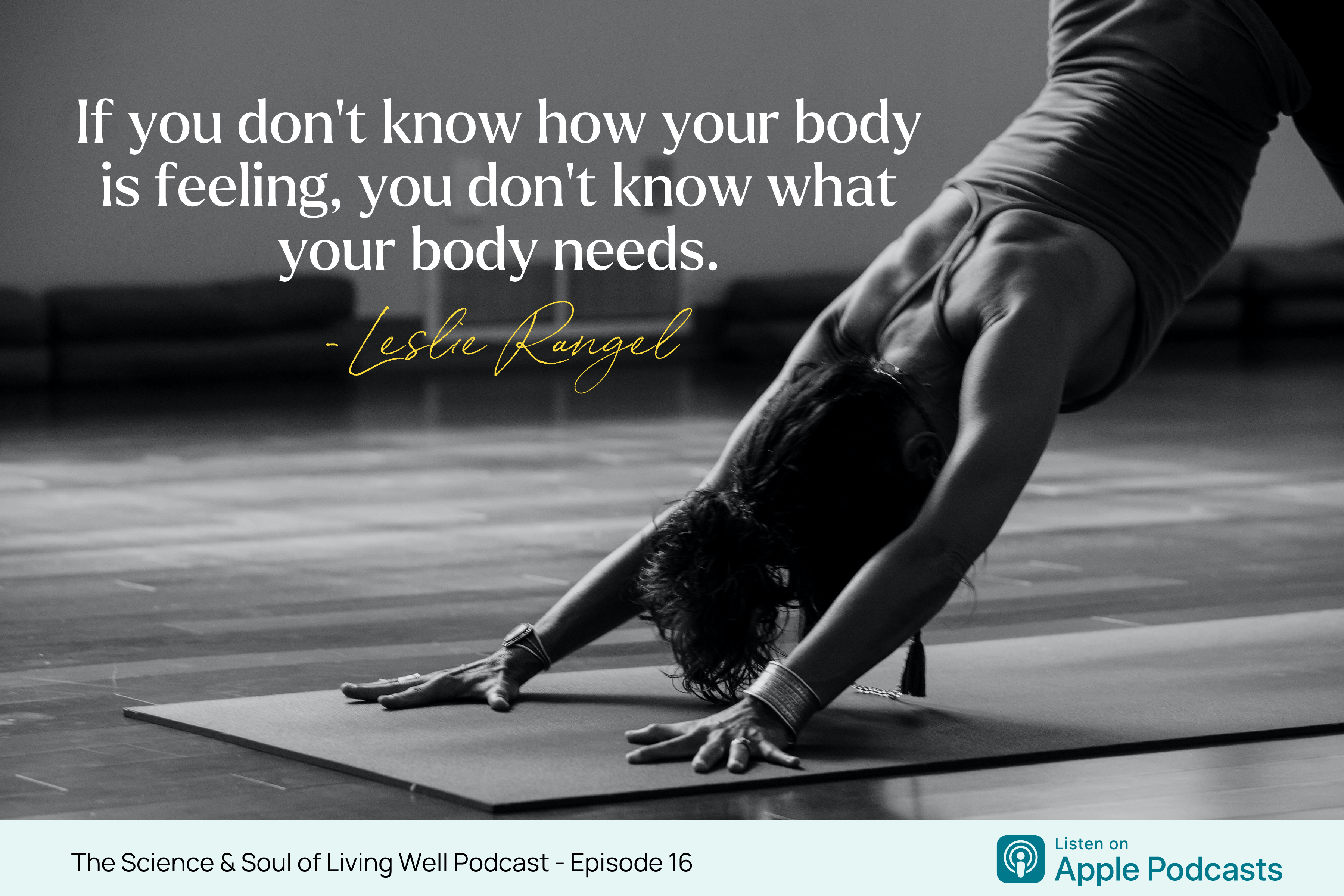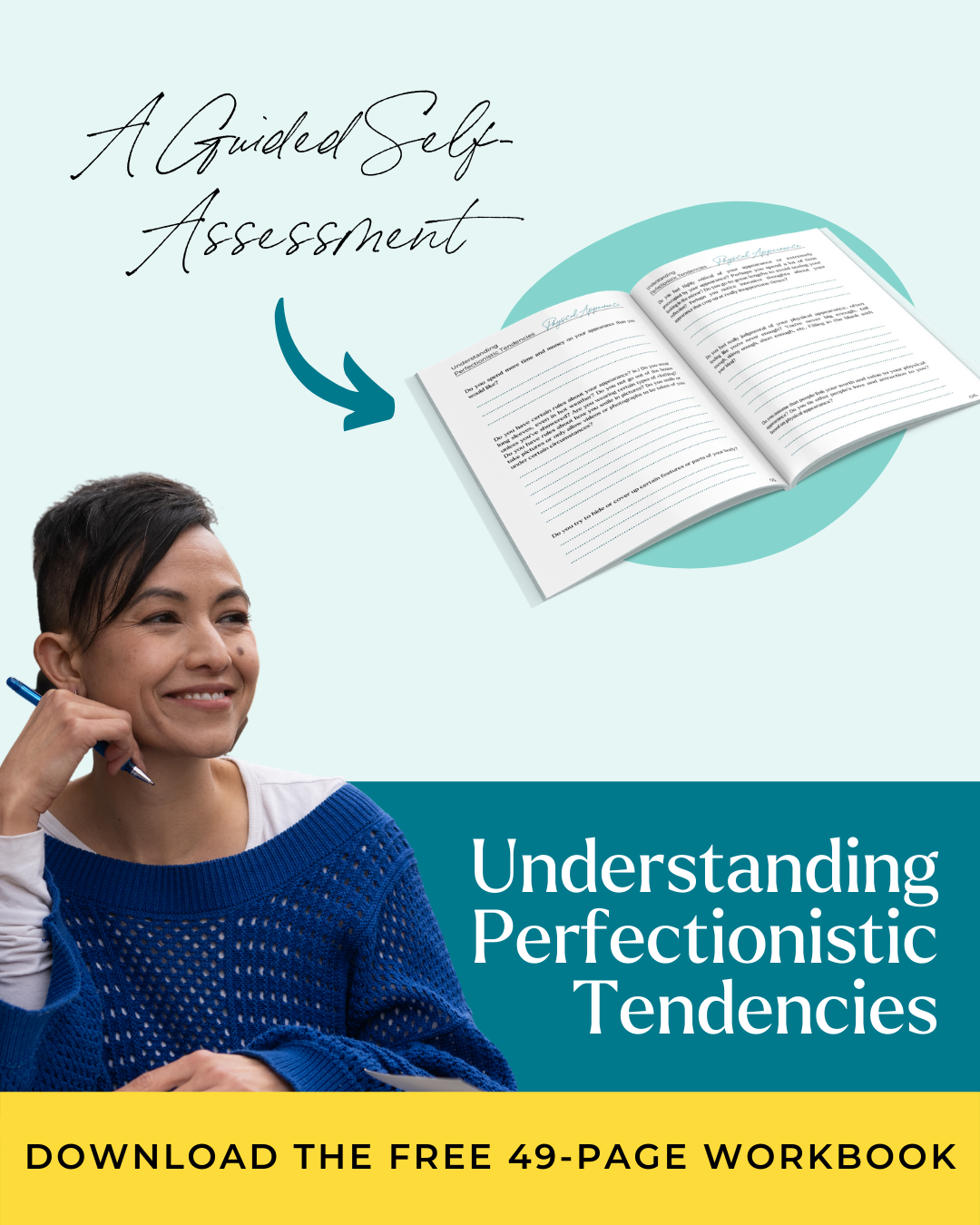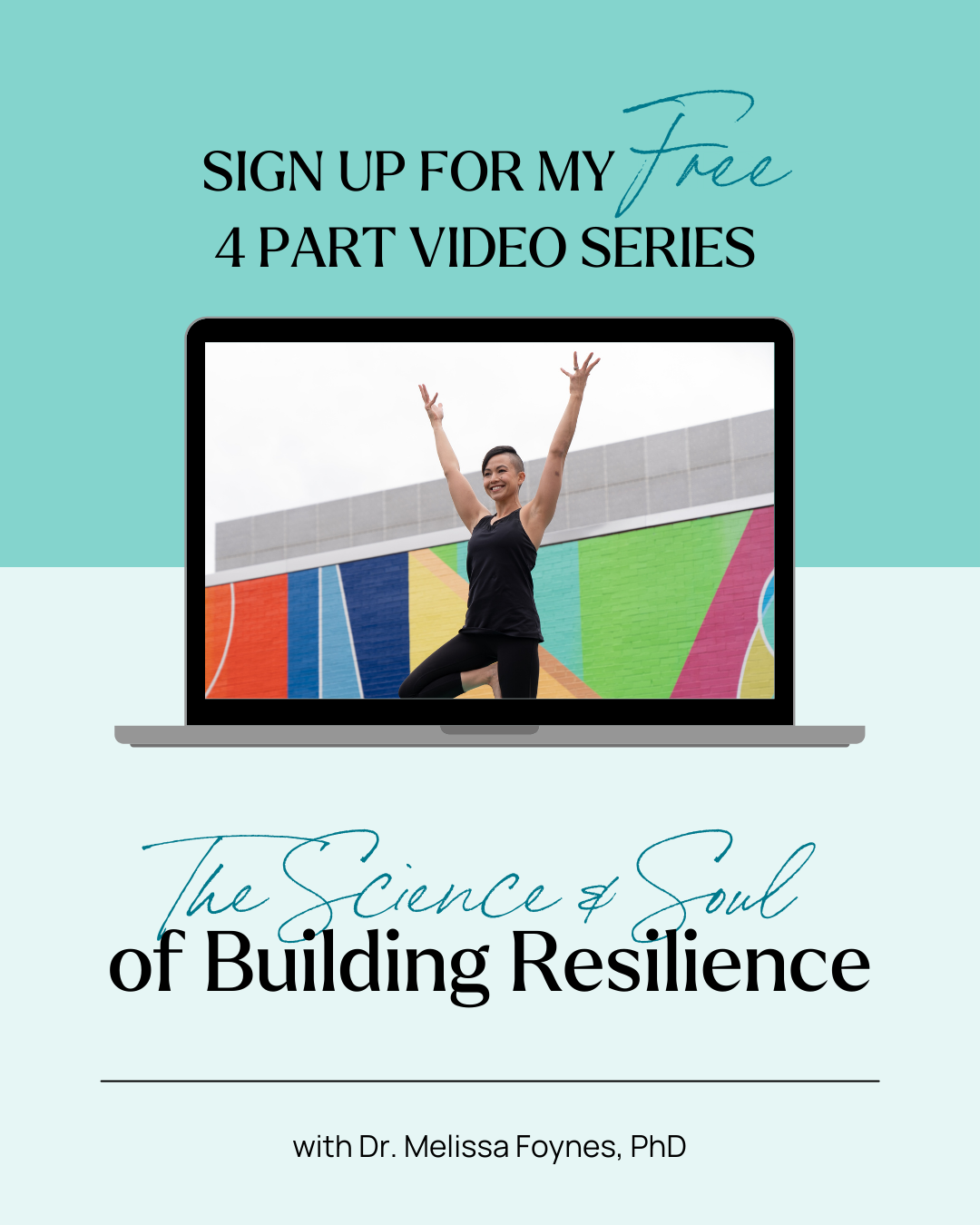welcome, I'm Melissa
Links
As a holistic coach, psychologist, mindfulness, meditation & yoga instructor, & Ayurvedic doula I offer personalized paths to growth & healing.
you may also like...
Burnout, Body image and True Purpose – An Interview with Leslie Rangel
April 15, 2021
Leslie Rangel is the News Yogi and the co-anchor of Good Day Austin. She’s an award-winning journalist and yoga instructor who believes the capacity for healing exists within us all. By teaching yoga, she promotes self-care, compassion and nurturance for navigating stress and trauma.
As Leslie says, “If you don’t know how your body is feeling, you don’t know what your body needs.” Professional burnout can leave us feeling numb. Yoga or other mindful practices offer a path for healing — helping us to remember who we really are and why we do what we do professionally.
In my recent conversation with Leslie, we discussed the ways high-stress jobs like journalism can disconnect us from our deeper sense of meaning and purpose. She shares some of her personal journey in the following excerpt, describing how yoga has helped her cope with stress and trauma in the workplace, and heal her relationship with her body and herself.
Journalism as a mode of storytelling
 Melissa: Could you share a little about your relationship to journalism and how you view it as a mode of storytelling and a mode of healing?
Melissa: Could you share a little about your relationship to journalism and how you view it as a mode of storytelling and a mode of healing?
 Leslie: I really launched into my career to share stories — to give a voice to the voiceless. I would say that’s changed. People aren’t voiceless; they just need amplification of their voices.
Leslie: I really launched into my career to share stories — to give a voice to the voiceless. I would say that’s changed. People aren’t voiceless; they just need amplification of their voices.
As a first generation Mexican-American, I’ve begun to see there are a lot of voices that are missing. They’re not being amplified for whatever reason. I think my mission is to help do a better service in terms of storytelling by making sure that all the stories that we are hearing are well rounded — regardless of ethnicity, color, race, gender and sexual orientation.
And I guess I look at it in terms of healing too. When we think about our ancestors — like my lineage and the history of Mexico — there’s a rich storytelling history. I really see myself as an extension of the work that my ancestors were doing by telling stories and making sure our stories live on.
That’s my mission in journalism: to continue sharing these stories — the good ones, the bad ones, the ugly ones — so that we don’t forget who we are and where we came from.
 Melissa: It’s interesting to hear you talk about your lineage and how there really is this deeper, more profound sense of meaning and purpose in terms of your ancestry. In many ways, that’s how I think about the practice of yoga, a coming home to ourselves and feeling more able to inhabit ourselves.
Melissa: It’s interesting to hear you talk about your lineage and how there really is this deeper, more profound sense of meaning and purpose in terms of your ancestry. In many ways, that’s how I think about the practice of yoga, a coming home to ourselves and feeling more able to inhabit ourselves.
For many people, the practice of yoga is also about reflecting on aspects of lineage in order to heal. So it really is this beautiful tapestry, this intersection of yoga and journalism in what you just described.
 Leslie: I love how you described it as a tapestry. And it really is. I’ll be candid; I didn’t always see yoga or journalism like that. For a long time, yoga was just a workout for me that made me feel good.
Leslie: I love how you described it as a tapestry. And it really is. I’ll be candid; I didn’t always see yoga or journalism like that. For a long time, yoga was just a workout for me that made me feel good.
Then I began to use yoga as a way to deal with the stress. I’m in a career that burns out so quickly, and it’s super easy to forget what the mission of journalism is. A lot of journalists forget what the mission is, what the point of all of this is.
But when we can really come back to our mission and our purpose, that not only serves us as humans — but it serves our storytelling. We can see people when we’re sharing those stories, and we can also be more of a service to our society.
Body image and trauma
 Melissa: I think the way our professions are structured often promotes a disconnection from our deeper sense of meaning, purpose and mission. Continuing to come back to that, over and over again, is a part of resilience and living out the deepest expressions of our purpose.
Melissa: I think the way our professions are structured often promotes a disconnection from our deeper sense of meaning, purpose and mission. Continuing to come back to that, over and over again, is a part of resilience and living out the deepest expressions of our purpose.
In journalism, there’s the time and the pressure of deadlines, as well as the exposure to the depth of human experience. You’re opening yourself up to the emotion of that experience and allowing for a connection to happen. This is also true of other professions — both this aspect of the grind and the exposure to the full breadth of human experience.
Having that connection to meaning and purpose is a way to have resilience and to create a container to hold all of your feelings. The container can be yoga or another practice. But it’s some way of coming home to that meaning and mission, a way of having a container to support how we’re living our day-to-day lives.
I’ve heard you talk a bit about body image in the past and how, in many ways, yoga was a path towards healing your relationship to yourself and your body. I think body image is something that many people struggle with, and it often gets in the way of people practicing yoga. People often associate yoga with a certain body type, or shape, or fitness level or flexibility. Yet the practice of yoga can offer so much in terms of healing our relationships to our bodies.
Do you have any reflections that you want to share about body image and trauma? What would you say to people for whom body image might be getting in the way of approaching a yoga practice? And how do you see yoga as a way to navigate trauma?
 Leslie: I think they actually go a little hand-in-hand. When I was in fourth grade, I was 250 pounds. And for a 10-year-old, that’s a lot of weight for a child to hold. It was directly related to emotional eating and ongoing trauma that I was experiencing. And for a long, long time, I was wrapped up in body dysmorphia, believing a beauty standard that I think absolutely needs to be dismantled.
Leslie: I think they actually go a little hand-in-hand. When I was in fourth grade, I was 250 pounds. And for a 10-year-old, that’s a lot of weight for a child to hold. It was directly related to emotional eating and ongoing trauma that I was experiencing. And for a long, long time, I was wrapped up in body dysmorphia, believing a beauty standard that I think absolutely needs to be dismantled.
In the beginning, I was doing yoga as a workout because I thought I needed to fix something about myself. But in a way, it was like yoga was there to save me. Yoga allowed me to find more inner strength and discover the beauty in my body — and find the compassion that I didn’t know I needed for myself.
I could finally say to myself, “At one point in your life, you went through so much trauma, and it manifested through your body. How beautiful that you’ve been able to recover and deal with the trauma.”
I’m a real body with stretch marks and scars and wrinkles. I see that now, and I love my body so much because there’s a story that goes with it. Without my yoga practice, and my searching and healing, I would not have come to a place where I could even talk about that.
And so it’s been wonderful. You think you are going to yoga for a workout, and then there’s something else that’s making you feel good. Okay, fine! This can help me manage stress too. Okay, great! And then, wait, it’s also helping me with my body image. Okay, great! It all goes hand-in-hand, and within that is also the trauma because the body image was part of the trauma.
 Melissa: I recognize that, for those of us who struggle with body image and self-worth, it’s very hard. It’s hard work to cultivate this space. And you so tenderly described your own journey with some of these challenges — as if peeling back the layers and revealing all the pain that is there.
Melissa: I recognize that, for those of us who struggle with body image and self-worth, it’s very hard. It’s hard work to cultivate this space. And you so tenderly described your own journey with some of these challenges — as if peeling back the layers and revealing all the pain that is there.
Having hope that it’s possible to heal is important. I think the common thread is listening to the call for healing in whatever way that that shows up. If you’re struggling to find the right practice that cultivates healing, keep going. Healing is in our nature; resilience is in our nature. There’s an innate capacity. With the right tools and the right supports, we all have that capacity to heal.
We don’t have to move mountains with our practices. There can be a very brief, subtle check-in with ourselves that guides us towards what we most need. Remember that our practices don’t have to be fancy, complicated or time-consuming. It can be cooking, having your feet in the grass or snuggling with your puppies.
When we don’t create this time and space, weathering the storms of life is difficult. Being able to listen to your inner wisdom — and what imbalances your body, heart and mind are communicating — can bring you back into balance and alignment.
To strengthen your resilience and your connection to your sense of purpose, listen to my podcast: Burnout, Body Image and True Purpose: Tools for Healing and Homecoming. We highlight specific practices— such as yoga, breath work, mantras, work-life balance, mindfulness and cooking — that can be integrated into our daily lives, both preventing burnout and fostering a sense of grounding. (Important Note: Our conversation about trauma and body image does include references to self-harm urges, so please listen at your discretion.)
MAKE SURE TO SUBSCRIBE TO THE SCIENCE & SOUL OF LIVING WELL PODCAST.
Apple | Google | Spotify | iHeart | Audible
You can also contact me or join us on Instagram – @drfoynes.
About Leslie Rangel
Leslie Rangel, the News Yogi, teaches yoga to other journalists, helping them to heal from the stress and trauma of the news industry. As she says, “We break news. It doesn’t break us.” You can connect with Leslie on Instagram or her website.
Related articles:
Yoga as a Mirror: Life Alignment On and Off the Mat
3 Ayurveda Practices for Balance and Alignment
BEFORE YOU GO…
DOWNLOAD THE FREE 49 PAGE WORKBOOK
LEARN MORE ABOUT MY COACHING PRACTICE THROUGH THIS FREE VIDEO SERIES:
The Science & Soul of Building Resilience
In this 4-part series you’ll learn:
- Body awareness to help us center ourselves and live in a present-focused and embodied way even in the midst of stress
- Decreasing our stress response so we can access intuition and connect to our needs
- Values clarification to guide decisions about prioritizing our time, attention and energy
- Self-compassion to soften our harsh inner critics and facilitate growth following mistakes
Freebie Alert!
Freebie Alert!
Newsletter
Sign up to get a dose of love, inspiration, wisdom &
all the latest news on events straight to your inbox.
privacy
terms
made with ❤ by habitat society
Explore
©2022, Melissa foynes
Thank you
You're subscribed to my newsletter. Please whitelist my email to make sure you don't missing anything I send you.


